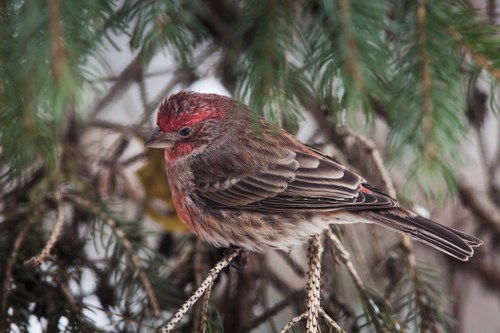
NPS/Gordon Dietzman IntroductionOriginally from the U.S. Southwest, a few house finches were transported east for use as cage birds, but released when the authorities cracked down on the illegal trade. In the 1940s, released house finches slowly built their population in New York, but recently their population has exploded with their range expanding south, west, and north from New York. They are now common birds in the Mississippi National River and Recreation Area. The house finch seems particularly sensitive to a bacterial disease that affects their eyes. While feeding birds is a popular hobby, concentrating birds at feeders may lead to greater rates of transmission of mycoplasmal conjunctivitis. Fortunately, the disease seems to have reached a peak and now exists at a much lower level among the finches. Identification
Get InvolvedClean your feeders frequently with a combination of vigorous scrubbing and disinfecting them using a 10% bleach solution to prevent the spread of the conjunctivitis. Let the feeders dry before hanging them up. Keep the ground clean beneath the feeders as well by raking up spilled seed and hulls. (The disease is not transmitted to humans.) | |
Last updated: April 18, 2018
